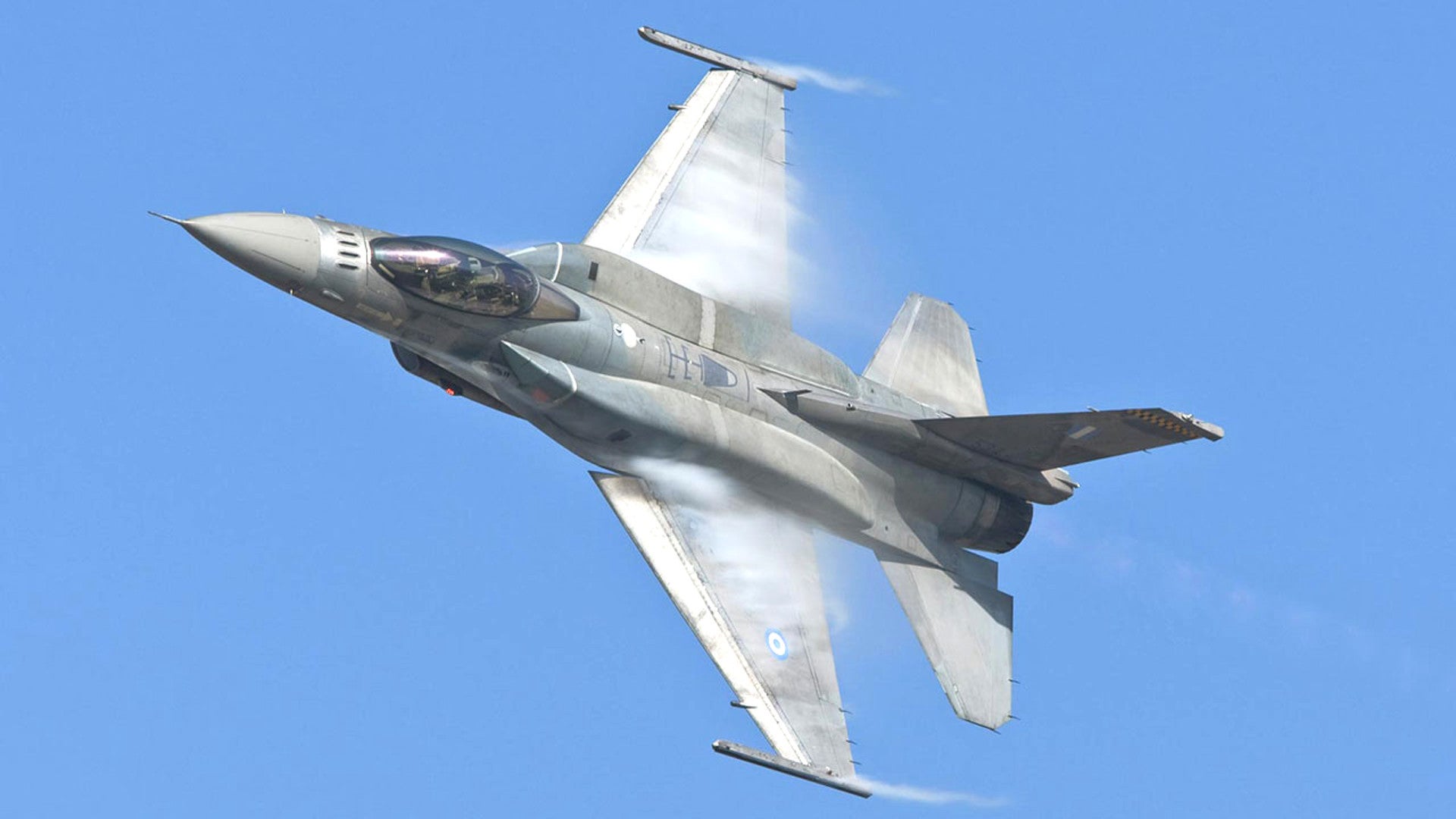The United States has approved the possible sale of more than 120 upgrade kits from Lockheed Martin to the Greeks for their F-16 fighter jet fleet. The deal, worth more than $2 billion, highlights the continued importance of advanced 4th generation fighter jets, especially for countries such as Greece that don’t necessarily have the need for or the resources to procure expensive, stealthy 5th generation aircraft.
The announcement came on Oct. 17, 2017, as U.S. President Donald Trump met with Greek Prime Minister Alexis Tsipras in Washington, D.C. Trump, who has repeatedly criticized NATO countries for not meeting the alliance’s defense budget targets, applauded Greece for meeting the goal of each member spending two percent of their gross domestic product on their military and highlighted the F-16 upgrade plans.
“They’re upgrading their fleets of airplanes – the F-16 plane, which is a terrific plane,” Trump said ahead of a bilateral meeting. “They’re doing big upgrades.”
According to the U.S. Defense Security Cooperation Agency, the complete package includes the necessary components to bring 123 of Greece’s existing F-16C and D fighter jets up to Lockheed Martin’s new F-16V standard, which the company first introduced in 2012. The updates include, among other things, new mission computers, navigation systems, multifunction displays, Advanced Identification Friend or Foe (AIFF) transponders, and the Link-16 tactical data link.
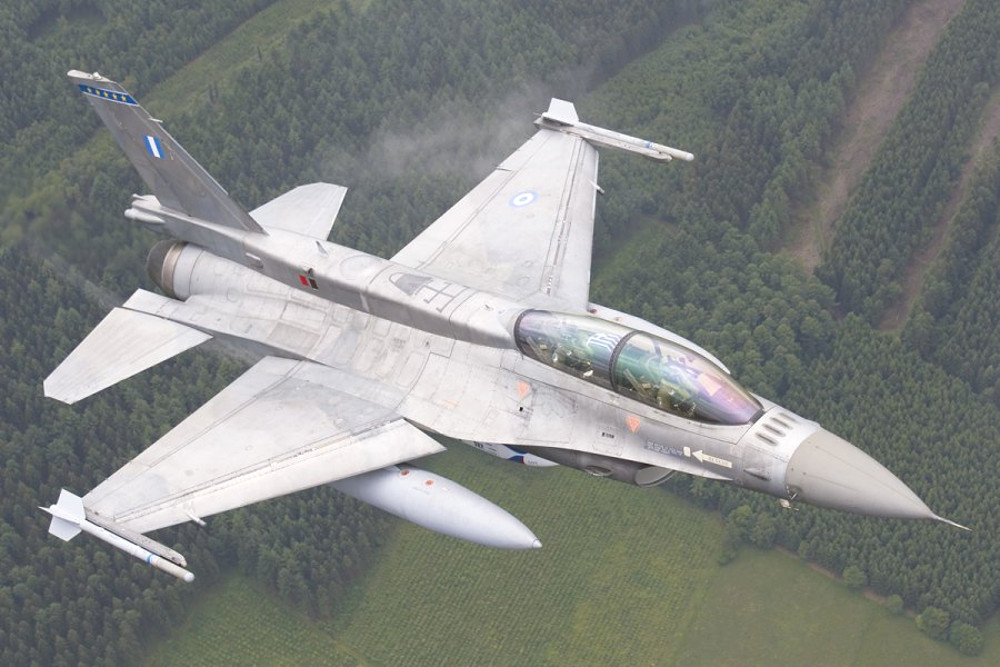
By far, though the most important upgrade is the replacement of the existing jets’ mechanically scanned radars with the AN/APG-83 active electronically-scanned array type radars, also known as the Scalable Agile Beam Radar (SABR). Faster scanning, even interlaced air and ground modes, and able to more accurately detect targets at longer ranges and smaller aerial targets flying at low altitude, the AESA unit is a cost-effective way to get more capability out of the older F-16Cs all by itself. The United States itself has recognized this and in June 2017, radar’s manufacturer Northrop Grumman announced it had gotten a contract to upgrade 72 Air National Guard F-16Cs with the new unit.
“AESA radar upgrades are critically important to give the F-16 community, the tactical advantage it deserves, and we are honored to provide this differentiating technology for the safety and mission effectiveness of our warfighters,” Bob Gough, the Vice President of Northrop Grumman’s Combat Avionics Systems division, said at the time. “The APG-83 SABR system is in full rate production and available now for U.S. and international F-16 upgrades.”
With 123 kits, the Greeks will be able to upgrade all 115 of their single seat F-16C fighters – a mix Block 30, Block 50, Block 52+, and Block 52+ Advanced aircraft, the latest versions featuring conformal fuel tanks among other improvements – to a single uniform configuration, as well as bring a number of their 40 two seat F-16D trainers up to the new standard. The full package would include two spare SABRs, 26 of Raytheon’s Advanced Self-Protection Integrated Suite (ASPIS) II electronic warfare systems for jets that haven’t yet received that upgrade, and a host of other spare parts and support services.
The total estimated value is of the purchase is just more than $2.4 billion. If Greece goes ahead with the deal, it would be the third country to purchase the F-16V package. Taiwan was the first to choose to upgrade its older F-16A/B jets to the new configuration in 2015, after it became apparent the United States would not approve the sale of all-new fighters for political reasons. The actual work began in January 2017.

Eight months later, the U.S. approved the sale of 22 new production V models to Bahrain. Lockheed Martin is pitching another derivative based on the upgrade package, the Block 70, to India, as well. On top of that, after fumbling the issue, the U.S. Air Force expects to overhaul more than 800 of its own Block 40/42 and Block 50/52 F-16C/Ds and keep them flying through 2048, during which time they will need their own additional radar and systems upgrades, suggesting that there will be a steady support pipeline for any country flying Vipers for years to come. At a little more than $19.5 million per jet, the Greek plan is definitely more cost effective than buying all new fighter jets.
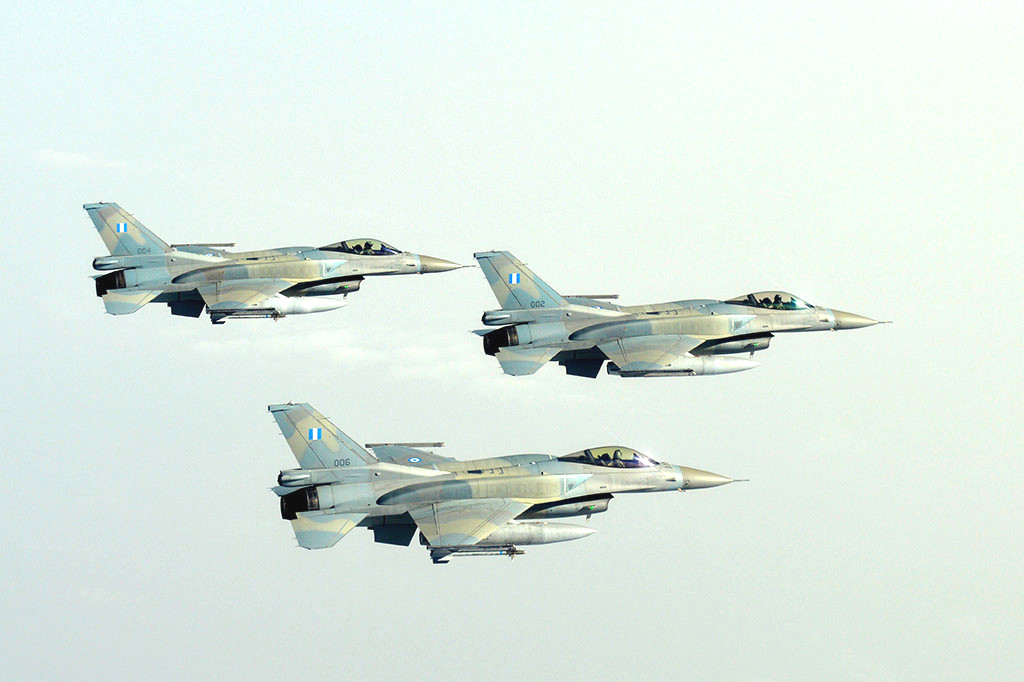
It is a small fraction of what it would cost Greece to procure and operate stealthy F-35 Joint Strike Fighters, something it still reportedly remains interested in doing in the future. The Greeks have been keen to match the capabilities of Turkey, which is planning to purchase both the F-35 and build its own fifth generation fighter, known as the TFX.
Though they are both NATO members, the Greeks and the Turks have long been major rivals, sparing violently many times over the years, especially with regards to the Mediterranean island country of Cyprus. An ethnic Turkish minority occupies a de facto independent region in the north, which only the government in Ankara recognizes, in defiance of the island’s ethnic Greek majority. Since 1964, a United Nations peacekeeping mission has provided a buffer between the parties while they’ve struggled to negotiate a final settlement.
Since the fall of the Soviet Union, the two countries’ air forces have faced off numerous times over the Aegean Sea, with Turkey notably accusing Greek Mirage 2000s of shooting down one of their F-16s in 1996. Greece said the Turkish aircraft crashed after an apparent mechanical failure during the engagement.

Beyond Turkey, Greece also has to consider security threats emanating from in the Middle East, such as Syria, as well as North Africa. In addition to looking to upgrade its F-16s, the country is also hoping to update its Russian-made S-300PMU-1 surface-to-air missile systems, which it acquired from Cyprus in 1997 as part of a deal to ease tensions with the Turkish government, as part of modernizing its integrated air defenses in general.
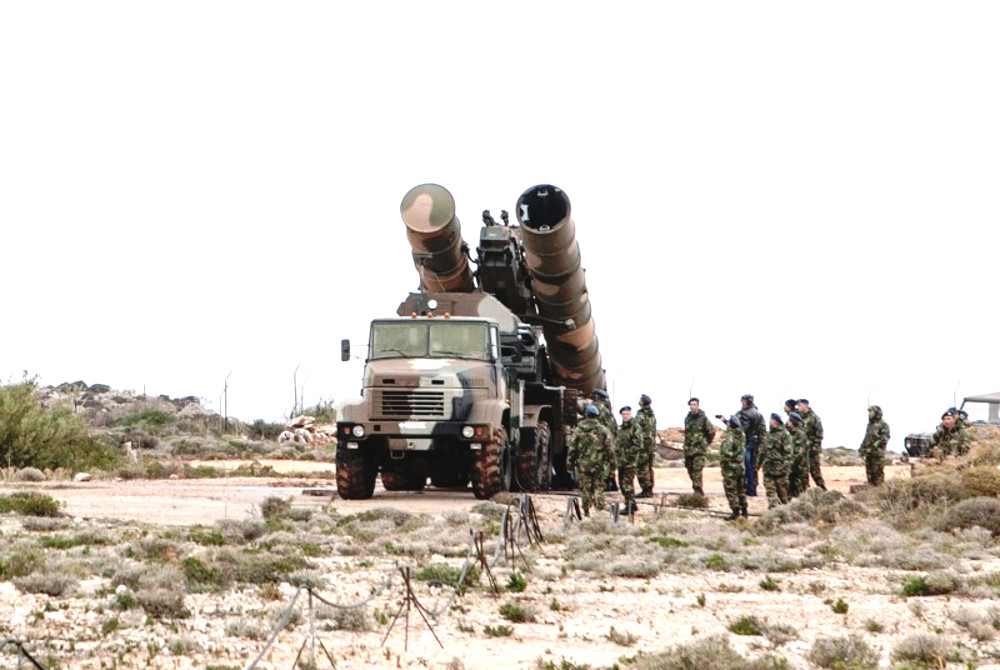
Unfortunately, a financial crisis in 2007 finally gave way to a depression in 2009 and the country’s economy has infamously struggled to rebound ever since. State-sponsored bailouts, notably from Germany, talks of leaving the Europe Union, and other desperate measures followed.
In June 2017, the International Monetary Fund effectively let Greece slide on its monthly debt payments in exchange for an agreement from Greek authorities to institute various austerity measures, such as changes to the country’s labor laws and changes to its national social security scheme. This put Greece’s plans to buy its own F-35s on hold, at least until 2025.
“Multiply the total cost [of an F-35] on 5 also for maintenance, infrastructure, etc,” Greece’s Deputy Defense Minister Dimitris Vitsas said during an interview on the country’s Skai TV. “Do we have the ability to do such things? When can we purchase such new fighters? In 2025.”
The Hellenic Air Force has a need for the upgrades now, though, especially when it comes to the oldest Block 30 F-16C/D, which it began receiving in 1985 through a U.S. Air Force managed Foreign Military Sales program colorfully nicknamed Peace Xenia. The Block 50 aircraft began touching down in 1993 as part of Peace Xenia II. These two batches of aircraft continue to make up a sizable portion of the country’s remaining 150 or so Vipers.
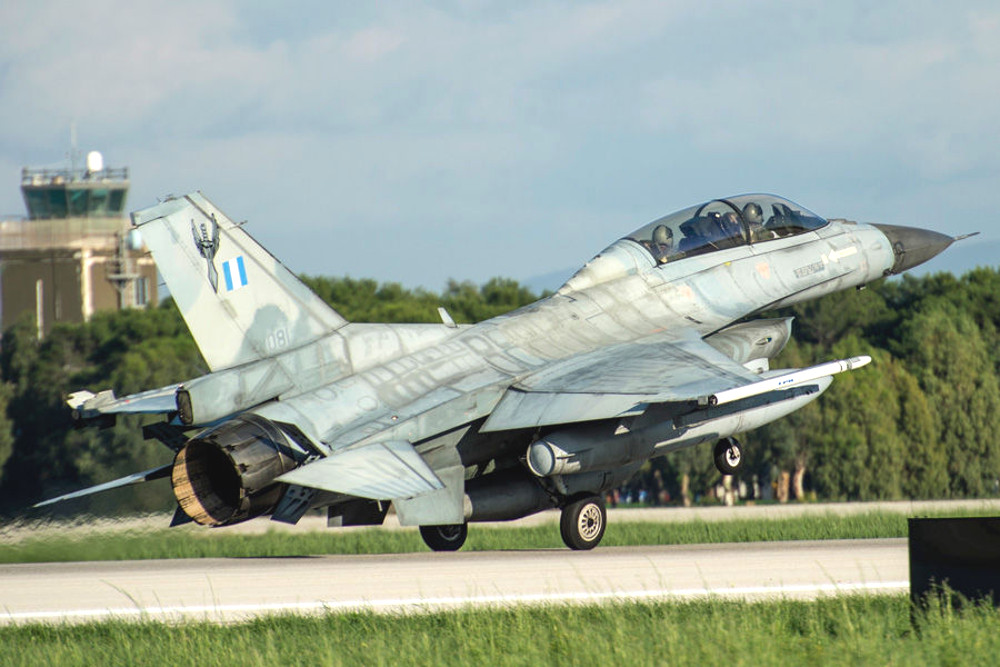
Finally bringing the diverse fleet to a single standard would help reduce strains on maintenance and logistics, since ground crews will no longer have to manage four different sub-types, no matter how similar they are, which in turn would help cut costs. This money could go into new procurement or make up for other budget shortfalls.
Costs and cost saving are undoubtedly high on the list of factors driving the upgrade program in general, given Greece’s budget troubles, but it is still reasonable to ask whether or not the Greeks will ultimately be able to pay for the upgrade project or any other modernization plans.
Greece’s government insists it will continue to spend two percent or more on defense and security, just one of five countries in NATO meet that spending goal. The others are the United States, the United Kingdom, Estonia, and Poland.
But while Greece may intend to continue spending significant amounts on its defenses, especially in light of Turkey’s expanding military capabilities and growing regional influence, it simply might not be able to do so if it cannot get its finances in order. Further budgetary hiccups could easily slow how fast that work gets done or outright curtail the number of F-16s that ultimately receive the upgrades.
Contact the author: joe@thedrive.com
